by Amanda Bauer
The Red-figure technique was first adopted in Athens in the 6th century BCE. Before this period, the Black-figure pottery technique was prevalently utilized. The technique consisted of a background painted in black slip (instead of the figures) and relief lines were used for details.
Some of the first artists to adopt the technique made so-called “bilingual” vases (with one side in each style), possibly to emphasize the difference between the two styles. The “Achilles and Ajax playing a dice game” by the Andokides Painter (ca. 525-520 BCE) is an example of such a work.
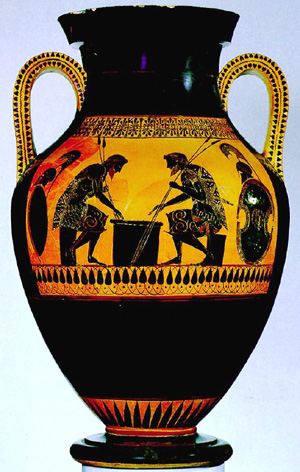
Andokides painter, Black-figure side of bilingual vase of 'Achilles and Ajax playing a dice game'
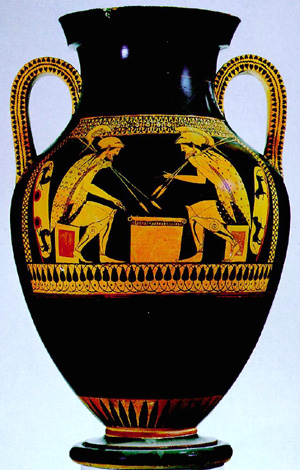
Andokides painter, Red-figure side of bilingual vase of 'Achilles and Ajax playing a dice game'
The advantages of using Red-figure technique for painting on pottery were manifold. Details such as draperies and musculature were more easily delineated on Red-figure pottery because the artist could use thin lines of black paint (relief lines) instead of incisions to make details. This new technique allowed for a more realistic representation of figures, and also allowed the artist to depict bodies in turnings and twistings, unlike Black-figure pottery. Further, in Black-figure it was difficult to have overlapping figures and foreshortening, but Red-figure also solved this problem.
Euphronius and his successors were the first to take full advantage of the Red-figure technique. Their pottery realistically depicts the human body and they experimented in foreshortening and suggestion of perspective or receding space. His calyx-krater of “Hercules wrestling Antaeus” is exemplary of these innovations.
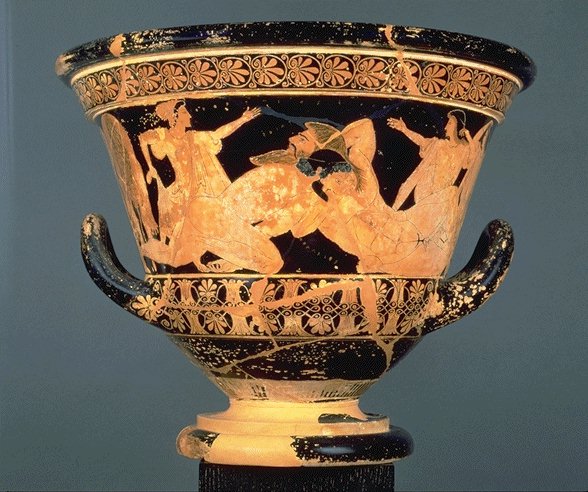
Euphronius, 'Hercules wrestling Antaeus'
Another famous Red-figure artist is the Berlin Painter. His amphoras depict satyrs and heroes, gods and goddesses dancing and drinking wine. On one amphora, for example, Athena pours wine for Herakles (who is on the reverse side of the vase). The Berlin Painter took full use of the advantages of the new technique, beautifully detailing the figures.
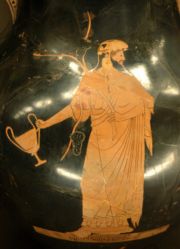
Berlin Painter, Amphora of Heracles and Athena (Heracles side)
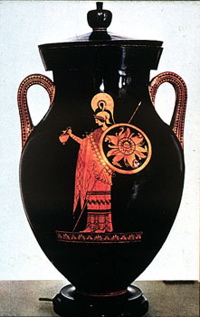
Berlin Painter, Amphora of Heracles and Athena (Athena side)
Works Cited:
Biers, William R. The Archaeology of Greece: An Introduction. Ithaca, NY: Cornell University Press, 1980. 2nd ed.
Kleiner, Fred S. and Mamiya, Chrisitin J. Gardener's Art Through the Ages. 12th ed. Belmont, CA: Thomson Learning Inc., 2005.
Ed. Moon, Warren G. Ancient Greek Art and Iconography. University of Wisconsin Press, 1983.
